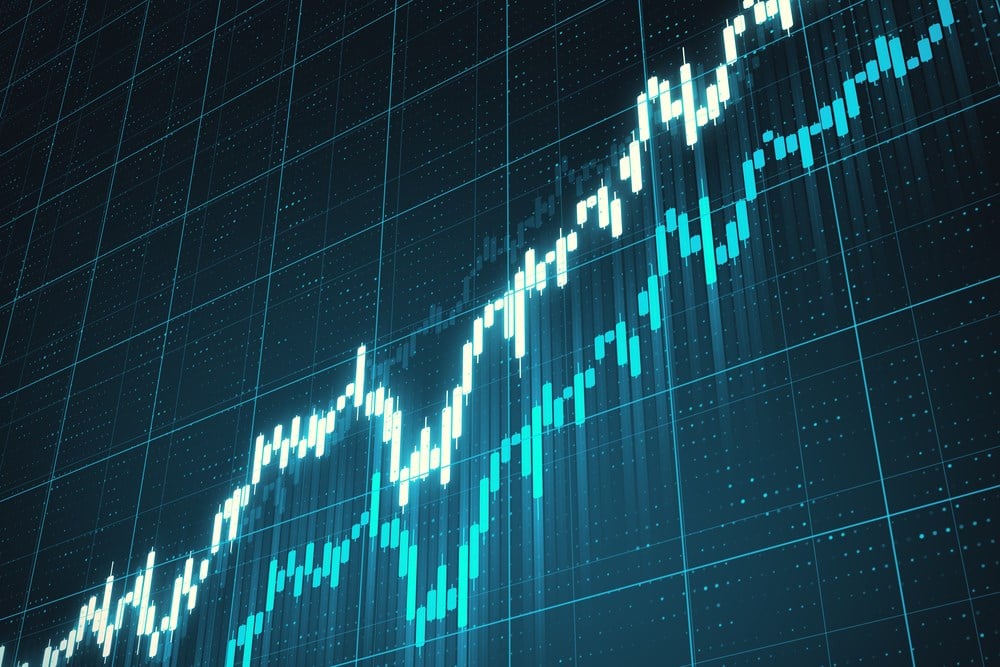
In the past week, growth sectors, as tracked by the Technology Select Sector SPDR Fund (NYSEARCA: XLK) and the Communication Services Select Sector SPDR Fund (NYSEARCA: XLC), have been the strongest performers.
As bonds sell-off, investors are shifting their portfolios from dividend stocks to growth stocks.
For example, S&P 500 2023 champion Nvidia Corp. (NASDAQ: NVDA), along with other growth leaders Meta Platforms Inc. (NASDAQ: META) and Tesla Inc. (NASDAQ: TSLA) have shown gains in each of the past two weeks.
Meanwhile, dividend stalwart Utilities Select Sector SPDR Fund (NYSEARCA: XLU) is down 9.36% in the past month. Over the past five sessions, the utilities sector is down 5.57%.
Another reliable dividend sector, real estate, as tracked by the Real Estate Select Sector SPDR Fund (NYSEARCA: XLRE), is down 10.30% during that time.
Utilities are a quintessential dividend sector due to their stable cash flows and historically high dividends. In fact, utilities were the only sector, besides energy, to eke out a positive return in 2022. However, even utilities can decline when bond
What's Behind Shift Away from Dividend Stocks
Here’s the backdrop on why this is occurring.
Rising bond yields can make fixed-income investments more attractive relative to dividend stocks, which offer income but may seem less appealing in a higher interest rate environment. In addition, despite a widespread perception that dividend stocks aren’t risky, equities as an asset class can always be considered riskier than fixed income.
In addition, the potential for faster earnings growth in sectors such as tech and consumer discretionary can make them a preferred choice during bouts of bond market turbulence.
It’s not always the case that growth stocks will rise when bond yields increase. However, if the economic prospects for growth stocks appear strong, as is the case currently, investors may still favor growth for their earnings potential, despite higher yields.
Here’s some more context: The current dividend yield for the SPDR Dow Jones Industrial Average ETF (NYSEARCA: DIA) is 2.00%. The yield for the S&P 500, as reflected by the SPDR S&P 500 ETF Trust (NYSEARCA: SPY), is 1.5%. The S&P is dominated by tech stocks and consumer discretionaries, which typically pay lower dividends than the more established Dow companies or no dividends at all.
The Dow Jones ETF is down fractionally year-to-date.
10-Year At Highest Levels In 16 Years
All this is happening as the 10-year Treasury yield surpassed 4.8% for the first time since August 2007. It fell slightly on October 4, ending the session at 4.733%.
In addition to these yields pushing income-seekers out of dividend-paying stocks, they’re driving institutional investors into cash, in the form of money-market funds and short-term Treasury bills. That explains a big piece of the broad market’s decline in recent sessions.
For institutional investors, cash is a safe haven during periods of uncertainty, even if those last only a few weeks. It allows those big investors to swoop back in when they spot an opportunity.
With the S&P 500 down 1.03% in the past five days, the biggest price gainers within the index during that time have been Tesla, Nike Inc. (NYSE: NKE), Trimble Inc. (NASDAQ: TRMB), and Advanced Micro Devices Inc. (NASDAQ: AMD). Tesla and AMD are growth stocks with high price-to-earnings ratios. Trimble, which makes laser and optical gear, has a P/E of 20, which is slightly lower than average for an S&P 500 stock.
Meanwhile, the Nike dividend yield is 1.42%. The well-established company, which is also part of the Dow, has a P/E ratio of 29, higher than the S&P average. Nonetheless, it falls under the current “flee to growth” movement, as MarketBeat’s Nike analyst ratings show a consensus view of “moderate buy” on the stock. Wall Street has a price target of $123.17, an upside of 28.49%.
